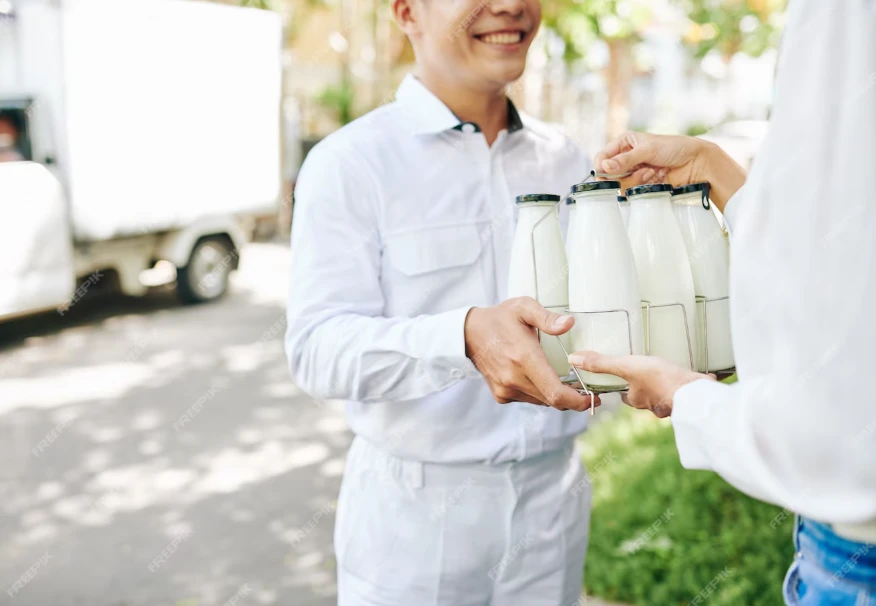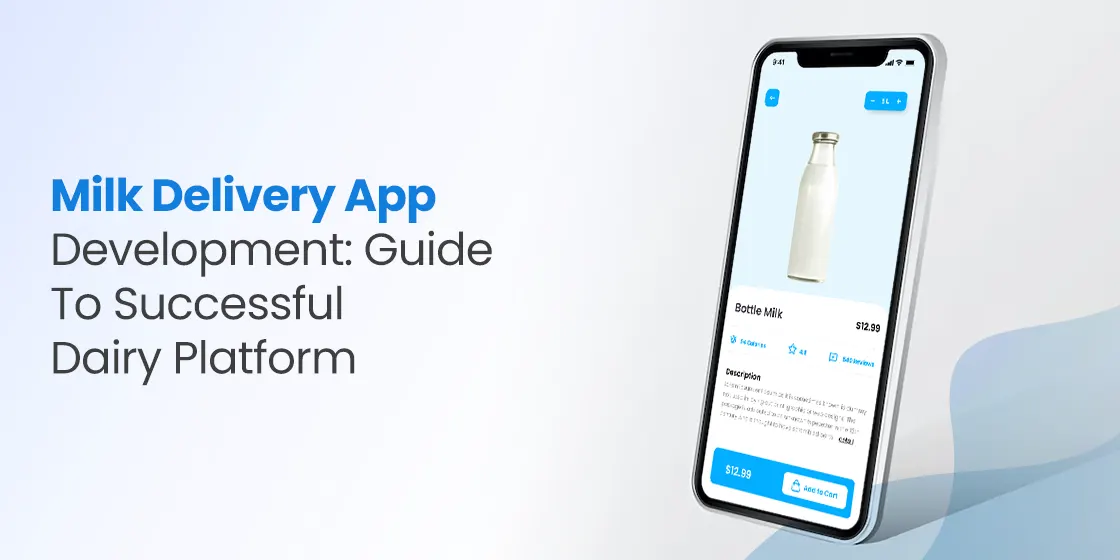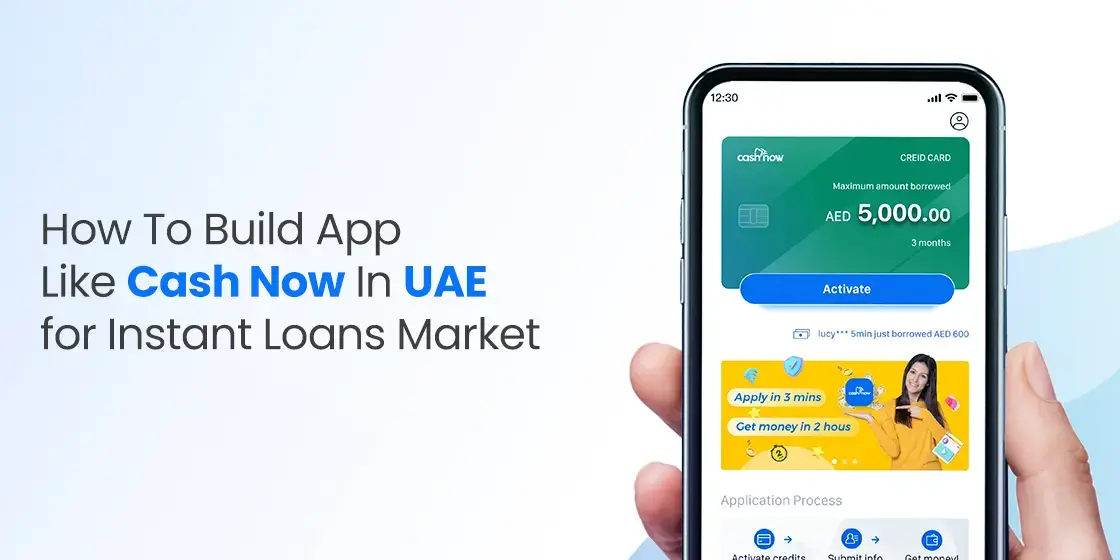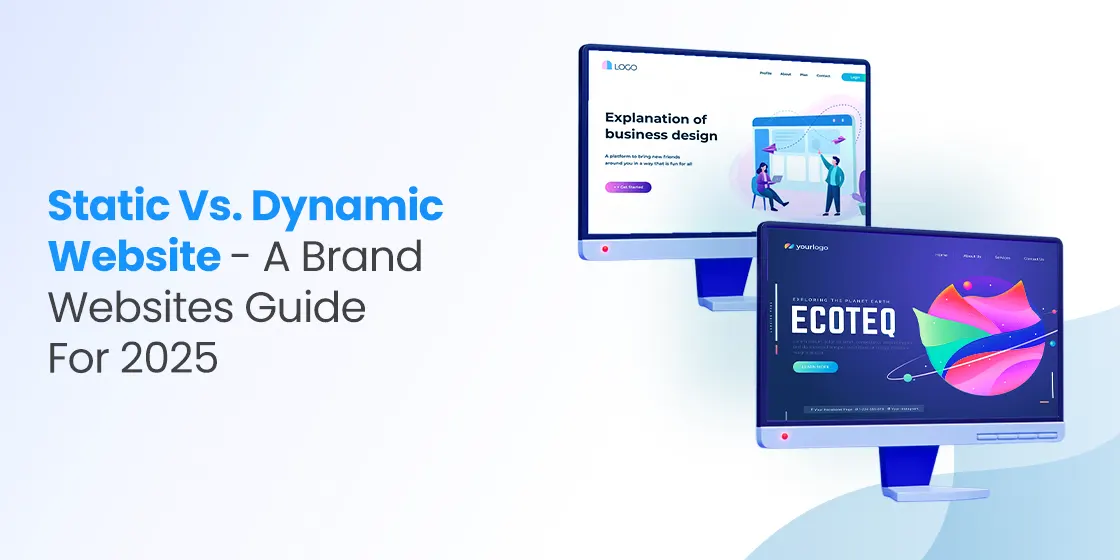Table of Content
Discover the Ins and Outs of Milk Delivery App Development for Online Dairy Services
The dairy industry is experiencing a digital transformation that’s reshaping how consumers access fresh milk and dairy products. With the global milk delivery service market valued at approximately USD 10.5 billion in 2023 and forecasted to reach USD 25.8 billion by 2032, milk delivery app development has emerged as one of the most promising opportunities in the on-demand economy. This remarkable growth rate of 10.5% CAGR reflects the increasing consumer demand for convenient, doorstep delivery services.
What makes milk delivery apps particularly attractive is the fundamental nature of milk as a daily necessity. Unlike other food delivery services, milk represents a recurring need that creates predictable revenue streams through subscription models. The COVID-19 pandemic accelerated the adoption of contactless delivery services, establishing new consumer behaviors that continue to drive market expansion. Today’s customers expect the same level of convenience for dairy products that they’ve grown accustomed to with other goods.
The convergence of smartphone penetration, improved logistics infrastructure, and changing lifestyle patterns has created the perfect storm for dairy digitization. Whether you’re a local dairy farm looking to reach customers directly or an entrepreneur seeking to enter the lucrative food delivery market, understanding the intricacies of mobile app development is crucial for success. Let’s take a deeper look at it.
Market Opportunity and Growth Potential

The milk delivery app market presents exceptional growth opportunities backed by compelling statistics and evolving consumer preferences. According to Statista, the global milk market revenue amounted to USD 71 billion in 2024, with an expected annual growth rate of 6.77%. From a per-capita perspective, the average person consumed around 49.9 kg of milk in 2024, generating per-person revenue of $49.51. These figures underscore the massive addressable market for digital dairy solutions.
Regional markets show varying levels of penetration and opportunity. Europe accounts for 36% of the global dairy market value, while India stands as the second-largest milk producer after the European Union, contributing 24% of global milk production. The Indian dairy market alone represents a USD 115.57 billion domestic opportunity, with online penetration at just 8% of the total $1.2 billion online market. This low digital adoption rate indicates substantial room for growth and market share capture.
The competitive landscape remains relatively fragmented, with fewer dominant players compared to other food delivery apps’ segments. This presents an ideal entry point for new businesses, as established market leaders haven’t yet saturated the space. The subscription-based nature of milk consumption creates predictable revenue streams and higher customer lifetime values compared to typical on-demand services, making milk delivery app development an attractive investment proposition for both startups and established businesses.
Essential Features for Customer Applications
Successful milk delivery app development begins with understanding the core features that customers expect from a modern dairy delivery platform. User registration and profile management form the foundation, allowing customers to create accounts, set delivery preferences, and manage their subscription details. The registration process should be streamlined, offering options for social media login, phone number verification, and easy profile completion to minimize onboarding friction.
Product catalog and customization capabilities represent the heart of the customer experience. Users need access to comprehensive product listings including various milk types (organic, lactose-free, full-fat, skimmed), quantities, and complementary dairy products. Advanced filtering options should allow customers to sort by price, brand, delivery time, and product attributes. The ability to set recurring orders with flexible scheduling—daily, weekly, or monthly—addresses the routine nature of milk consumption while offering convenience that traditional shopping cannot match.
Payment integration and order management must seamlessly handle both one-time purchases and subscription billing. Multiple payment options including credit cards, digital wallets, and cash-on-delivery cater to diverse customer preferences. Real-time order tracking, delivery notifications, and easy modification or cancellation options ensure customers maintain control over their purchases. Additional features like delivery window selection, special instructions for delivery personnel, and customer support chat enhance the overall user experience and build trust in the service.
Admin Panel and Management Features
The administrative backbone of milk delivery app development requires sophisticated management tools that enable efficient operations and business growth. Order management systems must handle high volumes of daily orders, automatically process recurring subscriptions, and manage exceptions like delivery failures or product unavailability. Real-time dashboards should provide comprehensive visibility into order status, revenue metrics, inventory levels, and delivery performance to support data-driven decision making.
Inventory management becomes critical when dealing with perishable products that have short shelf lives., as with other grocery delivery app development niches The admin panel should track stock levels across multiple locations, predict demand based on historical data and subscription patterns, and automatically generate purchase orders or production schedules. Integration with supplier systems and cold chain management ensures product freshness while minimizing waste through optimized inventory turnover.
Delivery management and route optimization represent core operational advantages of digital platforms over traditional distribution methods. The system should automatically assign orders to delivery personnel based on geographic proximity, optimize delivery routes to minimize travel time and costs, and provide real-time updates to both customers and delivery staff. Analytics and reporting features should track key performance indicators including delivery success rates, customer satisfaction scores, revenue trends, and operational efficiency metrics to support continuous improvement and strategic planning.
Delivery Partner Application Features
The delivery partner application is a crucial component of milk delivery app development that directly impacts service quality and operational efficiency. Driver onboarding should include document verification, background checks, and training modules specific to dairy product handling and customer service standards. The interface must be intuitive enough for drivers to navigate while maintaining focus on safe delivery practices.
Route optimization and GPS navigation integration help delivery partners complete their rounds efficiently while maintaining product quality. Real-time route updates, traffic information, and optimized stop sequences reduce delivery times and fuel costs. The application should provide detailed customer information including delivery preferences, special instructions, and contact details to ensure successful first-attempt deliveries.
Order management features for delivery partners include batch processing for multiple deliveries, proof of delivery collection through digital signatures or photos, and cash collection management for COD orders. The system should handle delivery exceptions like customer unavailability, address issues, or product damage with clear escalation procedures. Performance tracking and earnings management give delivery partners visibility into their productivity metrics, earnings history, and incentive programs, promoting engagement and retention within the delivery network.
Technology Stack and Development Approach

Choosing the right technology stack is fundamental to successful milk delivery app development, impacting scalability, performance, and maintenance costs. For mobile applications, cross-platform frameworks like React Native or Flutter offer development efficiency while maintaining native performance across iOS and Android platforms. These frameworks enable faster time-to-market and reduced development costs compared to building separate native applications.
Backend development requires robust server architecture capable of handling high concurrent users, processing recurring transactions, and managing real-time updates across multiple application components. Node.js with Express framework or Python with Django provide scalable backend solutions, while PostgreSQL or MongoDB handle data storage requirements. Cloud services like AWS, Google Cloud, or Microsoft Azure offer scalable infrastructure with built-in security, backup, and disaster recovery capabilities.
Integration requirements include payment gateways (Stripe, PayPal, Razorpay), mapping and navigation services (Google Maps, Mapbox), push notification services, and SMS gateways for communication. Third-party logistics APIs may be necessary for businesses that don’t maintain their own delivery fleet. The architecture should support API-first development to enable future integrations with IoT devices for cold chain monitoring, blockchain for supply chain transparency, or AI for demand forecasting and customer personalization.
Development Process and Timeline
The milk delivery app development process follows established mobile application development methodologies while addressing unique requirements of perishable goods delivery. The discovery and planning phase typically takes 2-4 weeks and includes market research, competitor analysis, feature specification, and technical architecture design. This phase establishes project scope, timeline, and budget parameters while identifying potential risks and mitigation strategies.
UI/UX design and prototyping require 3-6 weeks to create user-friendly interfaces that accommodate the specific workflows of milk delivery services. Design considerations include subscription management interfaces, delivery scheduling tools, and product customization options. The design phase should include user testing and feedback incorporation to ensure the final interface meets customer expectations and usability standards.
Development and testing phases typically span 12-20 weeks depending on feature complexity and platform requirements. Agile development methodologies enable iterative progress with regular client feedback and course corrections. The development timeline includes backend API development, mobile application coding, third-party integrations, and comprehensive testing across devices and operating systems. Post-launch support and maintenance planning should begin during development to ensure smooth operations and rapid issue resolution after market release.
Cost Analysis and Budget Planning
Milk delivery app development costs vary significantly based on feature complexity, development location, and quality requirements. Basic applications with essential features like product catalogs, ordering, and payment processing typically range from $15,000 to $30,000 when developed by teams in cost-effective locations like India or Eastern Europe. These solutions provide fundamental functionality suitable for small-scale operations or market validation.
Standard applications incorporating advanced features like subscription management, route optimization, real-time tracking, and comprehensive admin panels range from $30,000 to $60,000. This investment level supports medium-scale operations with sophisticated requirements and includes integrations with payment gateways, mapping services, and notification systems. Development at this level often includes custom UI/UX design and extensive testing across multiple platforms.
Enterprise-level solutions with AI-powered features, IoT integration, advanced analytics, and white-label capabilities can exceed $100,000 in development costs. These comprehensive platforms support large-scale operations with complex requirements including multi-tenant architecture, advanced supply chain management, and extensive customization capabilities. Ongoing maintenance and updates typically represent 15-20% of initial development costs annually, covering server hosting, security updates, feature enhancements, and technical support.
Operational Challenges and Solutions

Milk delivery app development must address unique operational challenges inherent in perishable goods delivery that don’t exist in other e-commerce sectors. Cold chain management requires specialized storage and transportation equipment to maintain product quality from source to customer. Technology solutions include IoT sensors for temperature monitoring, GPS tracking for delivery vehicles, and alert systems for temperature deviations that could compromise product safety. Moreover, there are some other issues common to location-based app development niche.
Demand forecasting becomes critical when dealing with products that spoil quickly and cannot be stored indefinitely. Machine learning algorithms can analyze historical consumption patterns, weather data, seasonal trends, and customer behavior to predict daily demand more accurately. Predictive analytics help optimize inventory levels, reduce waste, and ensure product availability while minimizing carrying costs for perishable inventory.
Last-mile delivery optimization addresses the challenge of delivering fresh products within narrow time windows while maintaining cost efficiency. Route optimization algorithms consider delivery time preferences, traffic patterns, and vehicle capacity constraints to maximize delivery efficiency. Dynamic routing capabilities allow real-time adjustments for new orders, delivery exceptions, or traffic conditions while maintaining customer service commitments.
Future Trends and Innovation Opportunities
The future of milk delivery app development will be shaped by emerging technologies and evolving consumer preferences toward sustainability, health consciousness, and convenience. Artificial intelligence and machine learning will enable more sophisticated demand forecasting, personalized product recommendations, and dynamic pricing optimization based on supply and demand conditions. AI-powered chatbots will enhance customer service capabilities while reducing operational costs through automated support interactions.
Internet of Things (IoT) integration will revolutionize cold chain management through real-time monitoring of storage and transport conditions. Smart refrigerated vehicles, connected storage facilities, and temperature-monitoring packaging will ensure product quality while providing transparency to customers about freshness and handling. Blockchain technology will enable end-to-end supply chain transparency, allowing customers to trace their milk from specific farms through processing and delivery.
Sustainability initiatives will drive innovation in packaging, delivery methods, and supply chain optimization. Electric delivery vehicles, reusable container programs, and carbon footprint tracking will appeal to environmentally conscious consumers while reducing operational costs. Integration with smart home devices and subscription optimization algorithms will further automate the milk delivery experience, potentially predicting customer needs before they place orders and ensuring seamless integration with modern connected lifestyles.
Frequently Asked Questions
| How much does milk delivery app development cost? Milk delivery app development costs range from $15,000-$30,000 for basic apps with essential features, $30,000-$60,000 for standard apps with advanced functionality like subscription management and route optimization, and $100,000+ for enterprise solutions with AI features and IoT integration. Costs vary based on features, development location, and complexity requirements. |
| What are the essential features needed in a milk delivery app? Essential features include user registration and profiles, product catalog with filtering options, subscription management, multiple payment gateways, real-time order tracking, delivery scheduling, push notifications, customer support chat, and admin panel for order and inventory management. Advanced features may include route optimization, AI-powered recommendations, and IoT integration for cold chain monitoring. |
| Which business model works best for milk delivery apps? The most successful models include direct-to-consumer (dairy producers selling directly), aggregator marketplace (connecting multiple suppliers), and subscription-based services (recurring deliveries). Many successful platforms use hybrid models combining subscription services with on-demand ordering to maximize revenue and customer flexibility while ensuring predictable cash flow. |
| How long does it take to develop a milk delivery app? Development typically takes 4-6 months including discovery and planning (2-4 weeks), UI/UX design (3-6 weeks), development and testing (12-20 weeks), and deployment. Timeline varies based on feature complexity, platform requirements (iOS, Android, web), third-party integrations, and team size. Simple apps may be completed faster, while complex enterprise solutions require longer development periods. |
| What technology stack is recommended for milk delivery app development? Recommended technologies include React Native or Flutter for cross-platform mobile development, Node.js or Python for backend development, PostgreSQL or MongoDB for databases, and AWS or Google Cloud for hosting. Essential integrations include payment gateways (Stripe, PayPal), mapping services (Google Maps), push notifications, and SMS services. The stack should support scalability, real-time updates, and third-party API integrations. |
Conclusion
Milk delivery app development represents a convergence of traditional dairy industry expertise with modern digital convenience that creates exceptional value for customers, businesses, and communities. The market opportunity is substantial, with proven demand for convenient dairy delivery services and significant room for growth in most geographic markets. Success requires careful planning, appropriate technology choices, and deep understanding of both customer needs and operational challenges unique to perishable goods delivery.
Whether you’re a dairy producer seeking direct market access, an entrepreneur exploring on-demand delivery opportunities, or an established food business expanding into new categories, milk delivery app niche offers a pathway to sustainable growth and customer satisfaction. The combination of recurring revenue potential, essential product demand, and emerging technology capabilities creates a compelling foundation for building a successful dairy delivery platform.

Empower your digital journey with StruqtIO - Your dedicated partner for cutting-edge custom software development, innovation, and digital transformative solutions. Harness the power of technology to elevate your business and redefine your digital landscape today.


